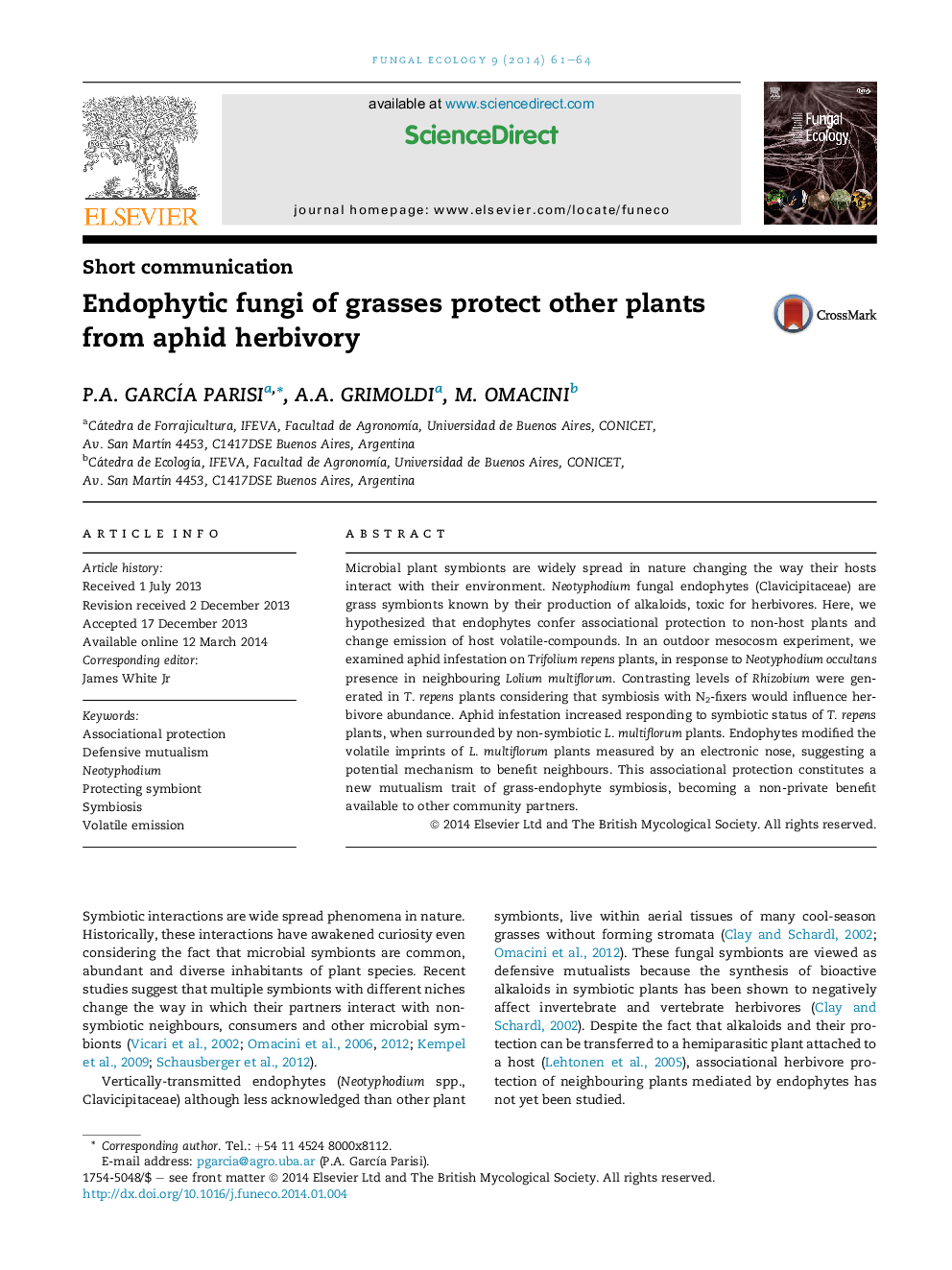| Article ID | Journal | Published Year | Pages | File Type |
|---|---|---|---|---|
| 8384696 | Fungal Ecology | 2014 | 4 Pages |
Abstract
Microbial plant symbionts are widely spread in nature changing the way their hosts interact with their environment. Neotyphodium fungal endophytes (Clavicipitaceae) are grass symbionts known by their production of alkaloids, toxic for herbivores. Here, we hypothesized that endophytes confer associational protection to non-host plants and change emission of host volatile-compounds. In an outdoor mesocosm experiment, we examined aphid infestation on Trifolium repens plants, in response to Neotyphodium occultans presence in neighbouring Lolium multiflorum. Contrasting levels of Rhizobium were generated in T. repens plants considering that symbiosis with N2-fixers would influence herbivore abundance. Aphid infestation increased responding to symbiotic status of T. repens plants, when surrounded by non-symbiotic L. multiflorum plants. Endophytes modified the volatile imprints of L. multiflorum plants measured by an electronic nose, suggesting a potential mechanism to benefit neighbours. This associational protection constitutes a new mutualism trait of grass-endophyte symbiosis, becoming a non-private benefit available to other community partners.
Related Topics
Life Sciences
Agricultural and Biological Sciences
Ecology, Evolution, Behavior and Systematics
Authors
P.A. GarcÃa Parisi, A.A. Grimoldi, M. Omacini,
